Jaffna, located on the northern tip of Sri Lanka, is a popular destination for birders. The region is home to a wide variety of bird species, including both resident and migratory species.
Birders in Jaffna can expect to find a wide range of species, from large raptors to small passerines. The region is also home to a number of important bird areas, making it an ideal place to observe and study birds.
Jaffna is a great place to explore for anyone interested in learning more about birds and birding..
1. Pheasant-tailed Jacana
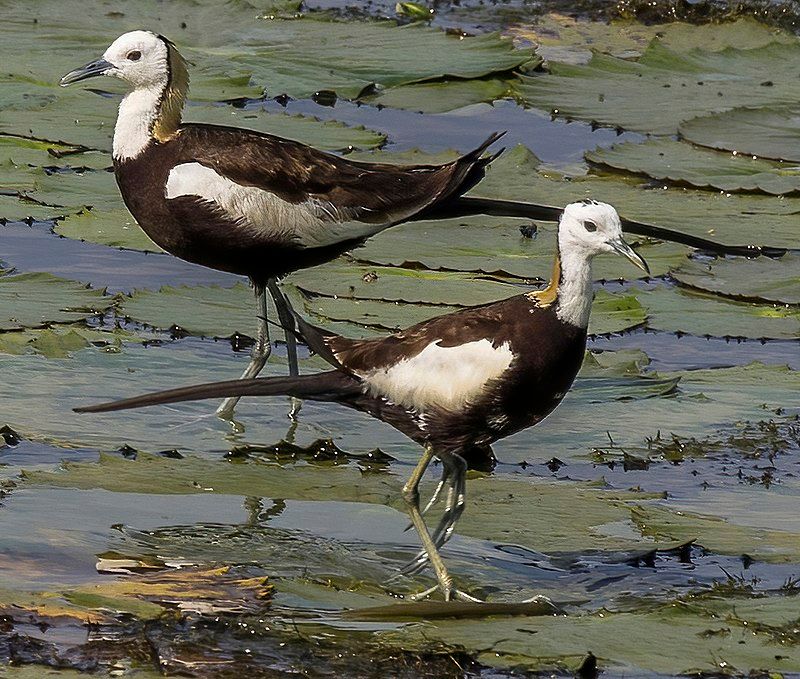
The pheasant-tailed jacana is an interesting and unique bird species that belongs to the monotypic genus Hydrophasianus. These birds are found in shallow lakes, which is their preferred habitat.
They have special adaptations that allow them to walk on floating vegetation in these shallow waters, such as their elongated toes and nails. This helps the birds to maintain their balance as they walk on top of the water.
The pheasant-tailed jacana is one of a few species of jacanas, and it is the only member of the Hydrophasianus genus. Its unique features make it stand out from other types of jacanas.
The pheasant-tailed jacana is an important species to conservationists as it helps to maintain the balance of the ecosystems in which it lives. It also provides an important food source for many other species of birds and animals.
| Kingdom | Animalia |
| Phylum | Chordata |
| Class | Aves |
| Order | Charadriiformes |
| Family | Jacanidae |
| Genus | Hydrophasianus |
| Species | H. chirurgus |
2. Common Redshank
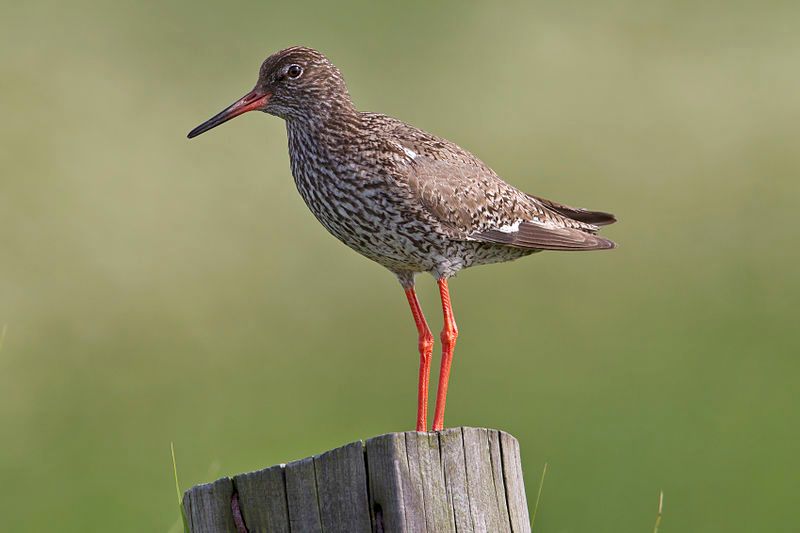
The common redshank is a species of wader, a type of bird that typically inhabits coastal and wetland areas.
It is found throughout Eurasia, from the United Kingdom through to northern China, and is part of the Scolopacidae family, which includes a number of other species of waders. It is a medium-sized bird, typically around 25-30 cm in length, with a wingspan of around 50 cm.
It is predominantly grey in color, with distinctive reddish-orange legs, hence its name. Its diet consists mainly of insects, worms, snails, and small fish, although they are also known to eat berries and other plant material.
They are usually found in shallow waters, such as estuaries, marshes, and mudflats, where they use their long, thin beak to probe for food. The common redshank is an important species for conservation, as it is an indicator species for the health of wetland habitats.
It is listed as ‘least concern’ on the IUCN Red List, however, it is still vulnerable to human activities, such as agricultural intensification, pollution, and habitat loss.
| Kingdom | Animalia |
| Phylum | Chordata |
| Class | Aves |
| Order | Charadriiformes |
| Family | Scolopacidae |
| Genus | Tringa |
| Species | T. totanus |
3. Common Sandpiper
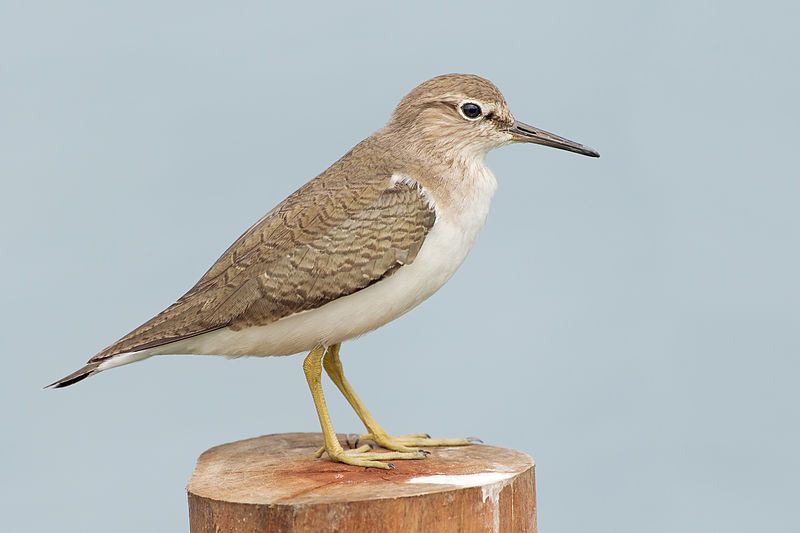
The common sandpiper is a small wading bird that can be found in the Palearctic region. It is closely related to the spotted sandpiper, which is found in the Americas, and both species are members of the genus Actitis.
The two species live in a geographic relationship known as parapatry, which means that they do not inhabit the same areas but rather their ranges overlap.
Occasionally, individuals of one species may wander into the range of the other and may even decide to breed with members of the other species, resulting in hybrid offspring. This is known as hybridization.
| Kingdom | Animalia |
| Phylum | Chordata |
| Class | Aves |
| Order | Charadriiformes |
| Family | Scolopacidae |
| Genus | Actitis |
| Species | A. hypoleucos |
4. Black-winged Stilt
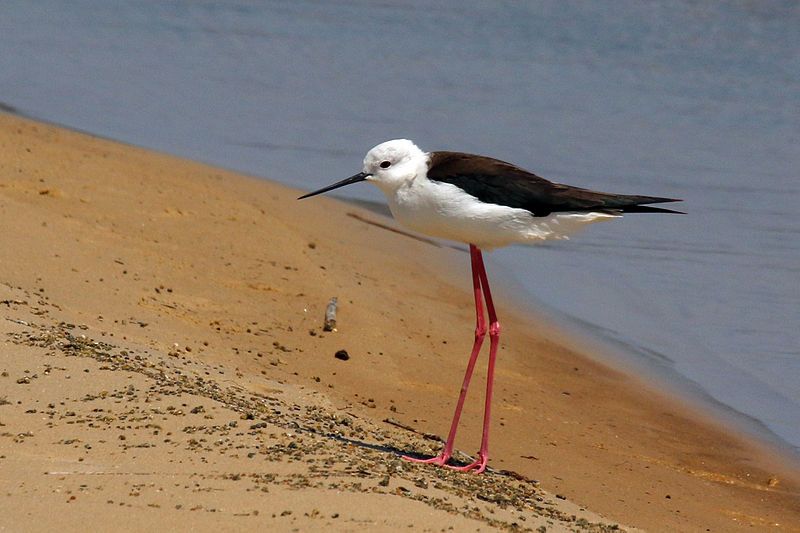
The black-winged stilt is a species of wading bird found around the world. It is part of the avocet and stilt family and is known scientifically as H. himantopus.
This species is relatively easy to identify, as it has very long legs and distinctive black wings. The black-winged stilt is widely distributed across many different habitats, from coastal wetlands to freshwater wetlands, such as marshes and ponds.
It is an omnivorous bird that feeds on both insects and small fish, as well as aquatic plants. The black-winged stilt is also known to feed on small crustaceans. The black-winged stilt is found in many different countries.
It is native to parts of Europe, Asia, Africa, and Australia, and has been introduced to many other parts of the world, including New Zealand, the United States, and South America. The black-winged stilt is also known as the Himantopus, or the ‘long-legged wader’.
The black-winged stilt is a ground-nesting species, meaning that it builds its nests on the ground. The nests are usually made from reeds, grasses, and other plant material.
The black-winged stilt is also known for its courtship displays, which involve the male bird performing a dance to attract a mate. The black-winged stilt is an important species in many ecosystems.
It helps to keep insect and fish populations in check, and its presence is an indicator of a healthy wetland habitat. The black-winged stilt is also a popular species for birdwatchers, as it’s bright feathers and distinctive call make it an easy species to spot.
| Kingdom | Animalia |
| Phylum | Chordata |
| Class | Aves |
| Order | Charadriiformes |
| Family | Recurvirostridae |
| Genus | Himantopus |
| Species | H. himantopus |
5. Indian Cormorant
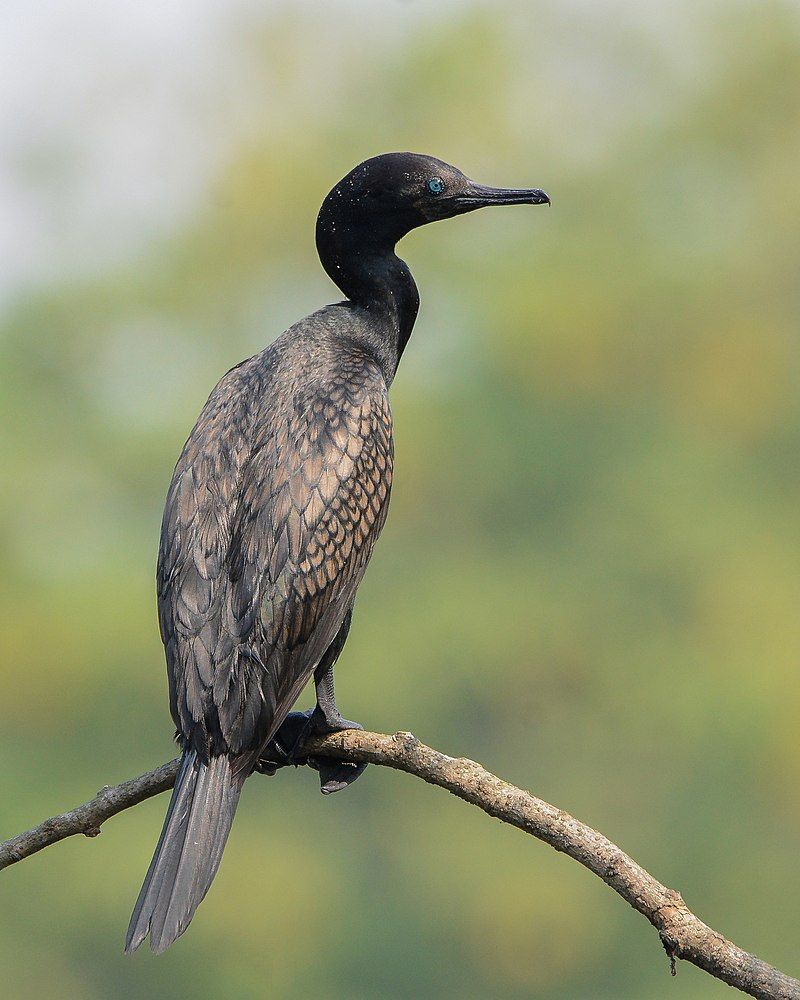
The Indian cormorant, also known as the Indian shag, is a species of seabird that belongs to the cormorant family of birds. It is mainly found in the inland waters of the Indian Subcontinent, spanning from India to Pakistan, Nepal, Bangladesh, and Sri Lanka.
In addition, its range extends west to Sind and east to Thailand and Cambodia.
This species is found in freshwater habitats like rivers, lakes, and reservoirs, as well as brackish water habitats like coastal lagoons and estuaries. The Indian cormorant is mostly black in color, with some white patches on its wings and body.
It has a long and thick neck, which is used for catching and swallowing its prey. Its diet consists mostly of fish, but it also feeds on insects, crustaceans, and other aquatic creatures.
It is a social bird, often seen in large flocks on the water’s surface or perched on branches. The Indian cormorant is an important species for local fisheries, as it helps to keep the population of smaller fish in check.
It is also an important species for birdwatchers, as its presence on the wetlands can attract other species of birds. Therefore, conserving wetlands and providing a safe habitat for the Indian cormorant is essential for maintaining healthy fish populations and bird diversity.
| Kingdom | Animalia |
| Phylum | Chordata |
| Class | Aves |
| Order | Suliformes |
| Family | Phalacrocoracidae |
| Genus | Phalacrocorax |
| Species | P. fuscicollis |
6. Painted Stork
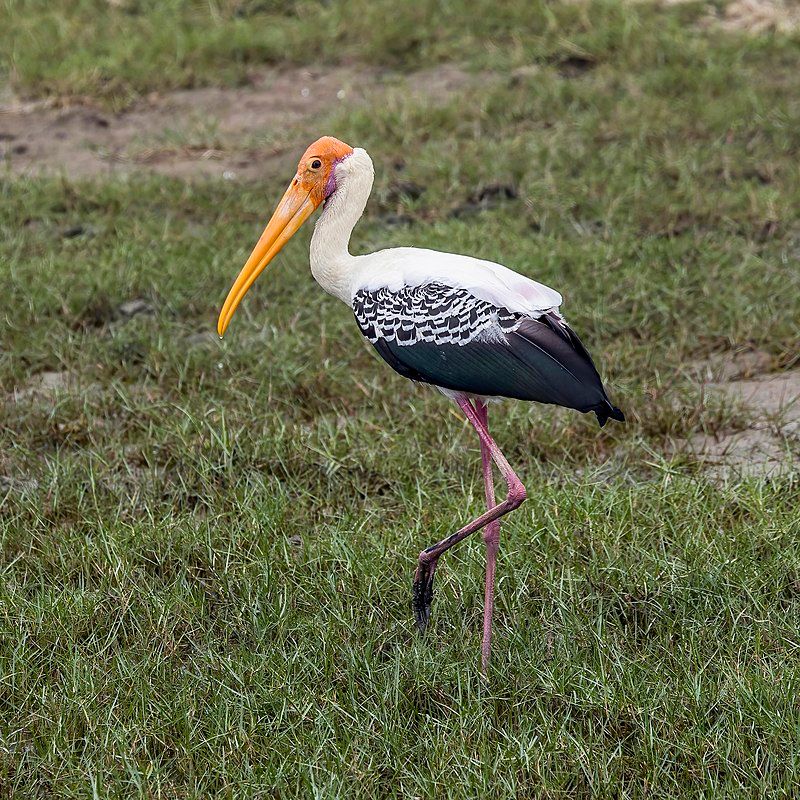
The painted stork is a large bird that belongs to the family of storks. It is native to the wetlands of tropical Asia, stretching from south of the Himalayas to the Indian Subcontinent and extending into Southeast Asia.
It is easily identified by its distinctive pink tertial feathers which are present in the adults of the species. These feathers give the bird its name as they are brightly colored and eye-catching. The painted stork is a fairly large bird, with a wingspan of up to 2 metres.
It has a white body with black flight feathers and a black tail. Its long, curved beak is yellow-orange in color, and its legs are black. The painted stork is also unique in that it has a bald head, which is pinkish-red.
The painted stork feeds mainly on fish and amphibians and will wade or swim into shallow water in order to catch its prey. It is a gregarious bird and is often seen in flocks, which can number up to hundreds of individuals.
It builds large stick nests, which are often shared by a number of birds. The painted stork is an important species in many wetland habitats. It helps to maintain the balance of wetlands by keeping the population of its prey species in check.
It also plays an important role in seed dispersal, as it often drops bits of food while flying, which helps to spread plants.
Unfortunately, the painted stork is threatened by habitat destruction and hunting and is listed as Vulnerable by the International Union for Conservation of Nature and Natural Resources.
| Kingdom | Animalia |
| Phylum | Chordata |
| Class | Aves |
| Order | Ciconiiformes |
| Family | Ciconiidae |
| Genus | Mycteria |
| Species | M. leucocephala |
7. Spot-billed Pelican
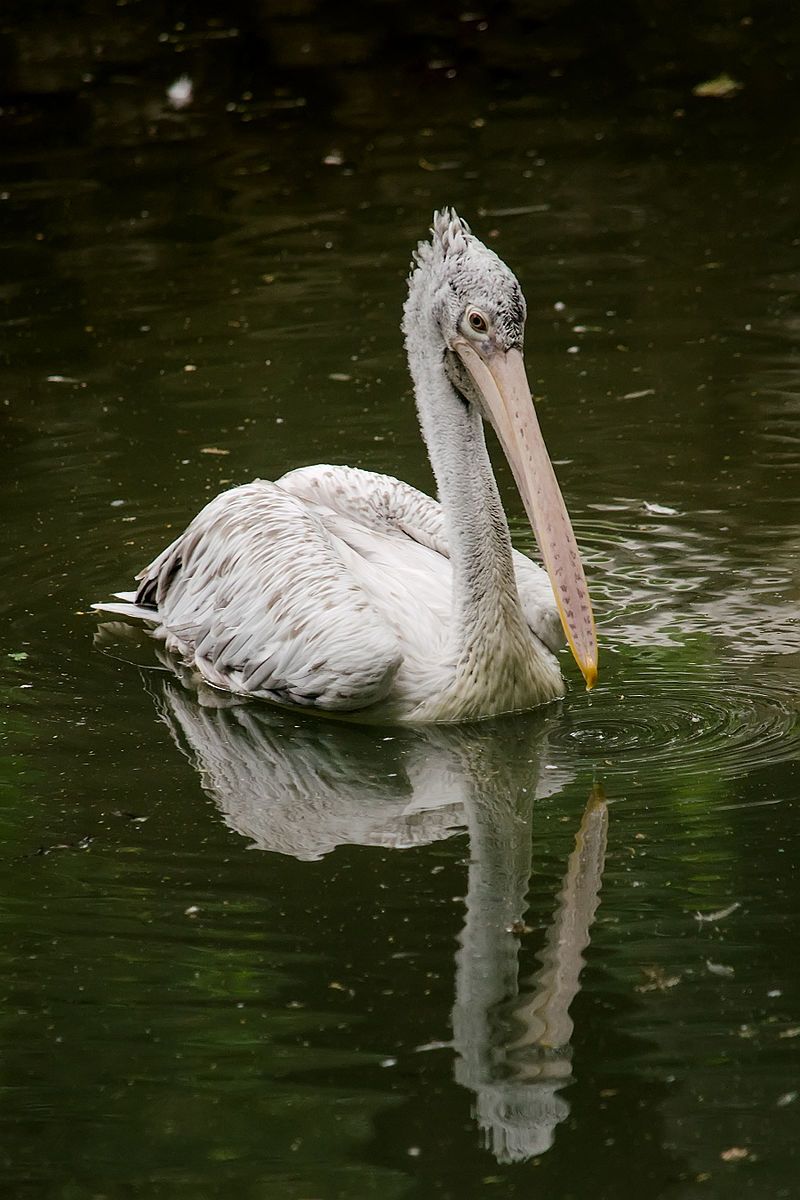
The spot-billed pelican, also known as the gray pelican, is a species of bird that is part of the pelican family. It is native to Southern Asia, ranging from Southern Iran to India and Indonesia.
This species of pelican typically inhabits large bodies of water, such as lakes, as well as coastal environments.
In these areas, they have been observed to be quite social and often travel in large flocks. The spot-billed pelicans are large birds, with a wingspan of up to 2 meters and weighing up to 4.2 kilograms.
They have a distinctive white and grey plumage, with yellowish-brown legs and a yellow bill with black spots.
They are carnivorous and typically feed on fish, crustaceans, and other aquatic life. The breeding season for the spot-billed pelican is during the summer months of June and July.
During this time, they will gather in colonies and construct nests on the ground, made of sticks and twigs. The female will lay up to three eggs, and both parents will take turns incubating them for around 28 days.
The chicks will remain in the nest for up to three months before they fledge and become independent. The spot-billed pelican is listed as ‘near threatened’ by the IUCN Red List, due to its declining population.
This is caused by a variety of factors, such as habitat destruction, disturbance from human activity, pollution, and overfishing. Conservation efforts are being taken to help protect this species, and it is hoped that their numbers can be increased in the future.
| Kingdom | Animalia |
| Phylum | Chordata |
| Class | Aves |
| Order | Pelecaniformes |
| Family | Pelecanidae |
| Genus | Pelecanus |
| Species | P. philippensis |
8. Common Greenshank
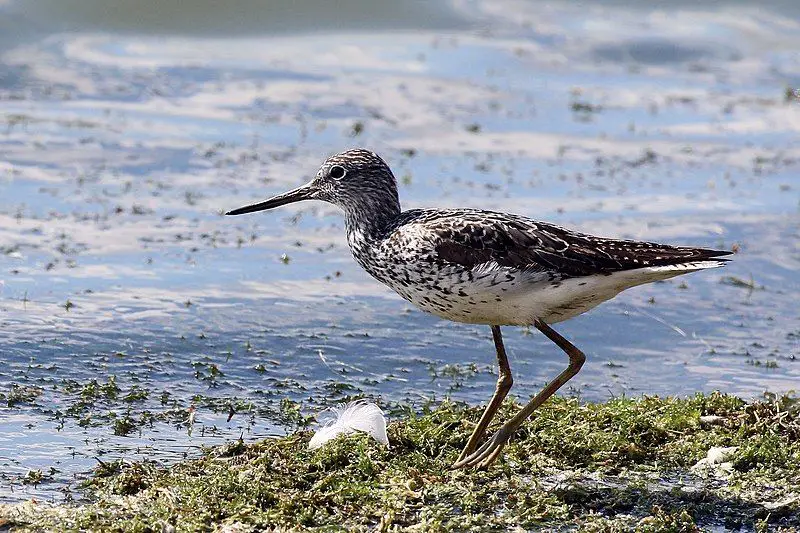
The common greenshank is a type of wader belonging to the family Scolopacidae, which encompasses all of the typical waders. The genus name Tringa was given to the green sandpiper by Aldrovandus in 1599 and was derived from the Ancient Greek word trungas.
This word referred to a small, white-rumped, tail-bobbing bird that was similar in size to a thrush. This description was originally noted by the philosopher Aristotle.
| Kingdom | Animalia |
| Phylum | Chordata |
| Class | Aves |
| Order | Charadriiformes |
| Family | Scolopacidae |
| Genus | Tringa |
| Species | T. nebularia |
9. Brahminy Kite
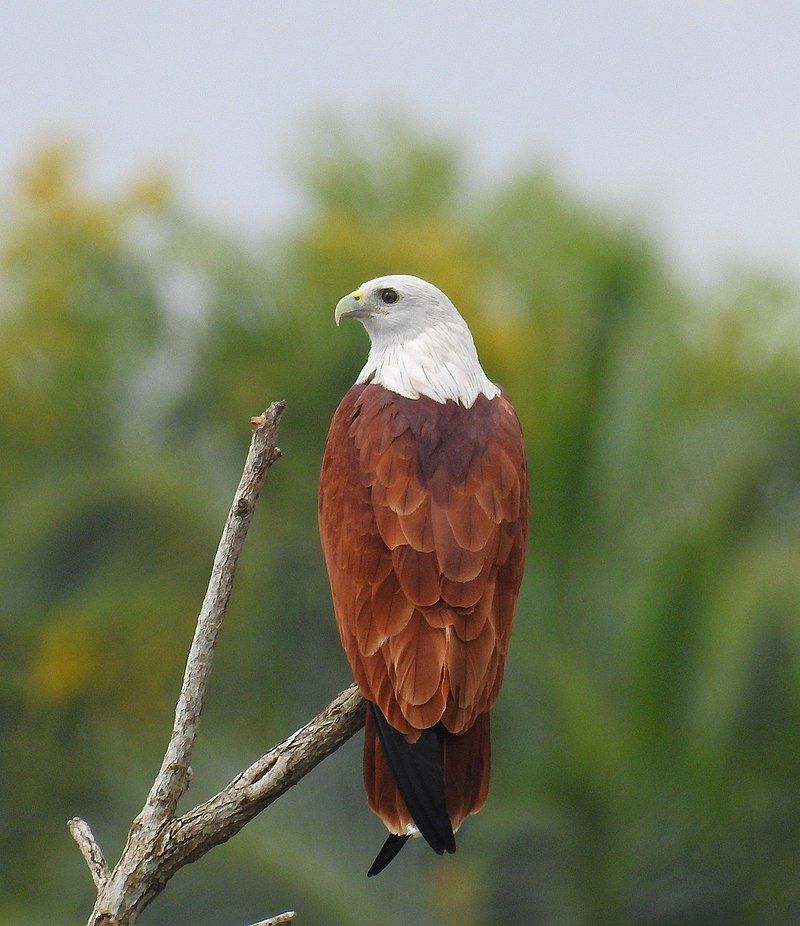
The brahminy kite is a bird of prey species found mainly in the Indian subcontinent, Southeast Asia, and Australia. It is also known as the red-backed sea eagle in Australia.
This raptor is a medium-sized bird, belonging to the Accipitridae family, which includes many other diurnal raptors such as eagles, buzzards, and harriers. The brahminy kite has a distinct and easily recognizable form, with its large wingspan, white head and chest, and reddish-brown back.
It is also known for its graceful, soaring flight, which is often seen near the coastlines and estuaries. This bird is an opportunistic feeder, feeding on small animals such as insects, reptiles, fish, and carrion.
They are also known to scavenge for food, particularly near human settlements. The brahminy kite is a social species, often seen in pairs or small groups. They are also highly vocal, with a loud, high-pitched chatter used for communication.
The nest of the brahminy kite is usually placed in a tall tree, often near water.
The eggs are incubated by both parents, and the chicks are cared for until they are able to fly. The brahminy kite is a protected species in many areas, and its population is increasing in some parts of its range.
However, changes in habitat and the use of pesticides have been identified as major threats to the species. Conservation efforts have resulted in the establishment of protected areas and the reintroduction of the species to some areas.
| Kingdom | Animalia |
| Phylum | Chordata |
| Class | Aves |
| Order | Accipitriformes |
| Family | Accipitridae |
| Genus | Haliastur |
| Species | H. indus |
10. Eurasian Moorhen
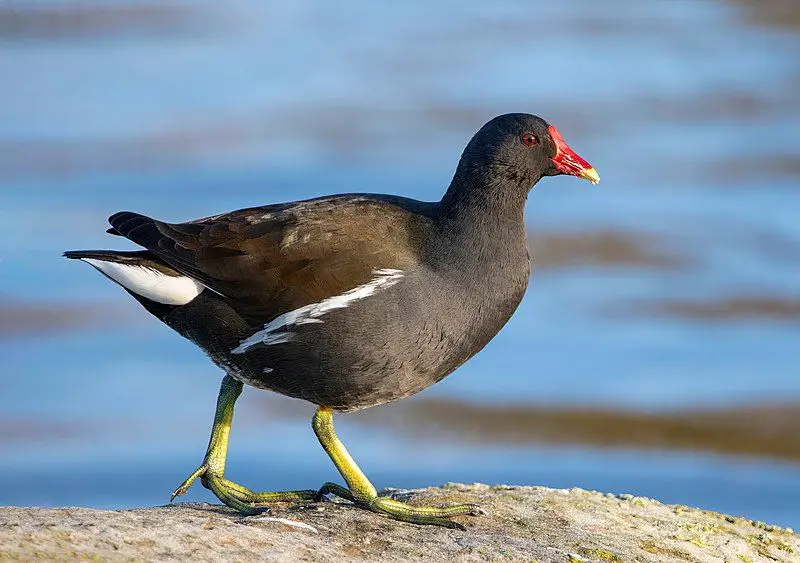
The common moorhen, also known as the waterhen or swamp chicken, is a species of bird belonging to the Rallidae family. It has a wide range across many parts of the Old World, including Europe, Asia, and Africa.
The common moorhen is found in wetland areas with abundant vegetation, such as swamps, marshes, ponds, and canals. It prefers habitats with shallow water and plenty of thick vegetation for shelter, including reeds, rushes, and grasses.
It is usually found in areas near shallow water, foraging along the banks, and in shallow wetlands. The common moorhen is a medium-sized bird, with a short, pointed bill, strong legs, and lobed toes for walking on mud and vegetation.
Its plumage is mainly brown and black, with a white patch on its belly. Its wings are short and rounded, and it has a long, distinct tail. The common moorhen feeds mainly on vegetation and small invertebrates, such as worms, snails, and insects.
It is an omnivore, meaning it will also feed on small fish, frogs, eggs, and even carrion. It is a noisy bird, and its distinctive call is a loud, repeated “kurr” or “chuk” sound. The common moorhen is an adaptable and widespread species, and its population remains stable.
It is a common sight in many wetlands around the world, and it is often encountered by people who live near these habitats.
| Kingdom | Animalia |
| Phylum | Chordata |
| Class | Aves |
| Order | Gruiformes |
| Family | Rallidae |
| Genus | Gallinula |
| Species | G. chloropus |
11. Indian Peafowl
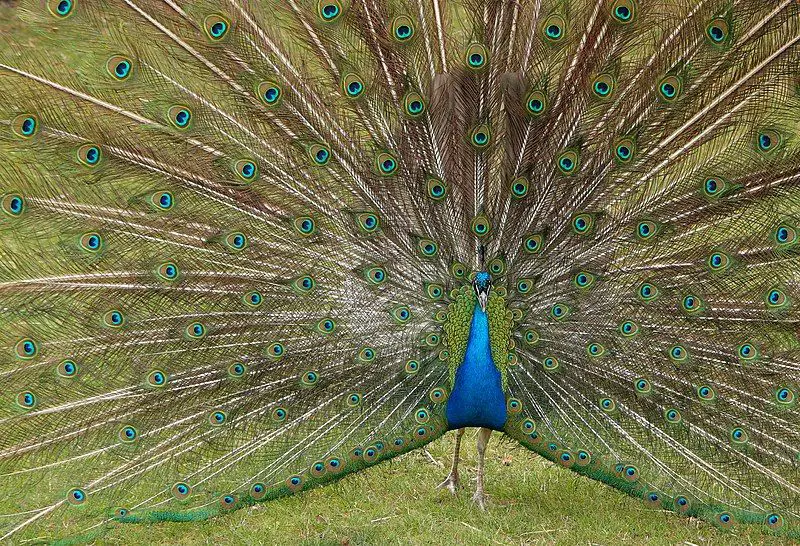
The Indian peafowl, also known as the common peafowl and blue peafowl, is a species of bird belonging to the pheasant family and is native to the Indian subcontinent.
This species is known for its vibrant colors, such as the bluish-green plumage of the males and the more muted brown plumage of the females.
It has a distinctive loud call and can be found in open woodland areas, grasslands, and cultivated fields. The Indian peafowl has been introduced to many other countries, such as the United States, southern Europe, and Australia.
This species is popular in aviculture and has been kept in captivity for many years. It is also seen in many parks and gardens, where it is admired for its beauty and grace.
In some places, it is a symbol of status and wealth due to its gorgeous feathers.The Indian peafowl is also an important part of Indian culture and is featured in many stories, myths, and religious texts.
It is said to represent the beauty and grace of nature and has been celebrated as a symbol of royalty and power. Overall, the Indian peafowl is a beautiful and majestic species of bird that is native to the Indian subcontinent.
It has been introduced to many other countries and is popular in aviculture and is a symbol of status and wealth in some places. It is an important part of Indian culture and is celebrated as a symbol of royalty and power.
| Kingdom | Animalia |
| Phylum | Chordata |
| Class | Aves |
| Order | Galliformes |
| Family | Phasianidae |
| Genus | Pavo |
| Species | P. cristatus |
12. Little Grebe
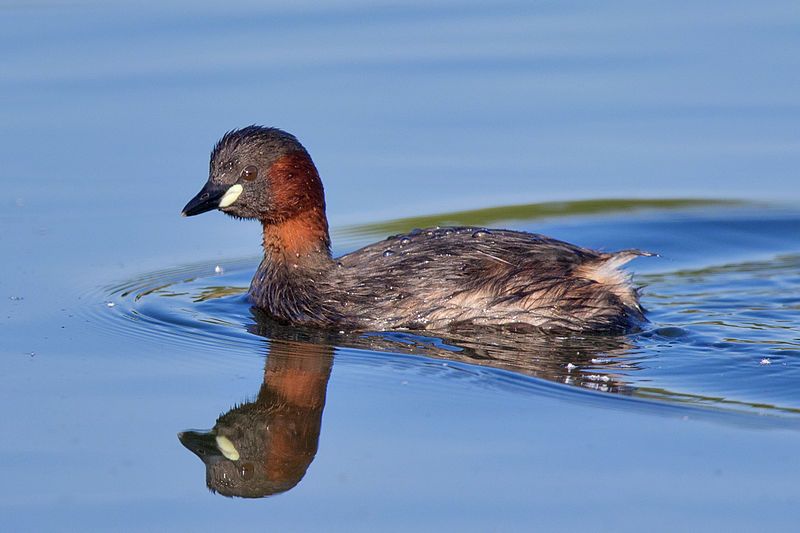
The little grebe, commonly known as dabchick, is a type of water bird belonging to the grebe family. Its scientific name, takhus ruficollis, is derived from two Ancient Greek and Latin words.
The genus name, takhus, is derived from the Ancient Greek word for ‘fast’, and bapto, meaning ‘to sink under’. The specific name, ruficollis, is composed of two Latin words: Rufus, meaning ‘red’, and collis, meaning ‘necked’.
This is further derived from collum, which is Latin for ‘neck’. In essence, the scientific name of the little grebe reflects its features as a water bird. It is known to be fast and able to quickly dive underwater, as suggested by the Ancient Greek word bapto.
The Latin word Rufus also reflects the bird’s physical features, as its neck is usually reddish in color. The little grebe is a common sight near water bodies, and it is easily recognized by its unique features.
It has a small body and a round head, with a white face and a black crown. The neck is usually reddish in color, which is why the Latin word Rufus was chosen for its specific name.
They have short legs and webbed feet, which enables them to swim quickly and dive underwater with ease. All in all, the little grebe is a fascinating water bird that is easily recognizable.
Its scientific name, takhus ruficollis, reflects its features as a fast, red-necked water bird.
| Kingdom | Animalia |
| Phylum | Chordata |
| Class | Aves |
| Order | Podicipediformes |
| Family | Podicipedidae |
| Genus | Tachybaptus |
| Species | T. ruficollis |
13. Lesser Whistling Duck
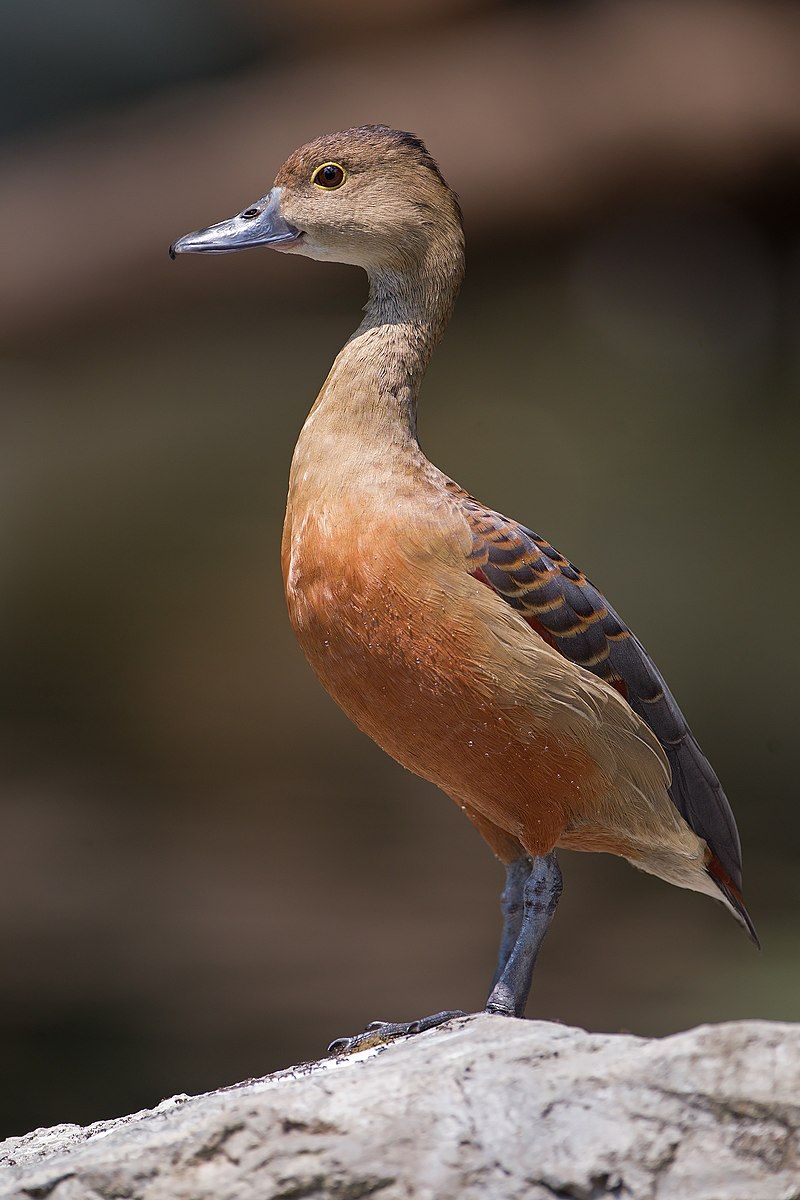
The lesser whistling duck is a species of whistling duck that is native to the Indian subcontinent and Southeast Asia. This species of duck is also known as the Indian whistling duck or lesser whistling teal.
These ducks are known as nocturnal feeders, meaning they are most active at night. During the day, lesser whistling ducks can be found in large flocks around bodies of water such as lakes and wet paddy fields.
These ducks are social creatures and prefer to stay in large groups rather than alone. They feed mainly on aquatic invertebrates, plant material, and small fish.
The diet of lesser whistling ducks is essential to their survival, as it provides them with the necessary nutrients to live healthily.
The lesser whistling duck is an important species to the ecosystems of the Indian subcontinent and Southeast Asia, as they help to regulate the populations of the species they feed on.
| Kingdom | Animalia |
| Phylum | Chordata |
| Class | Aves |
| Order | Anseriformes |
| Family | Anatidae |
| Genus | Dendrocygna |
| Species | D. javanica |
14. Black-tailed Godwit
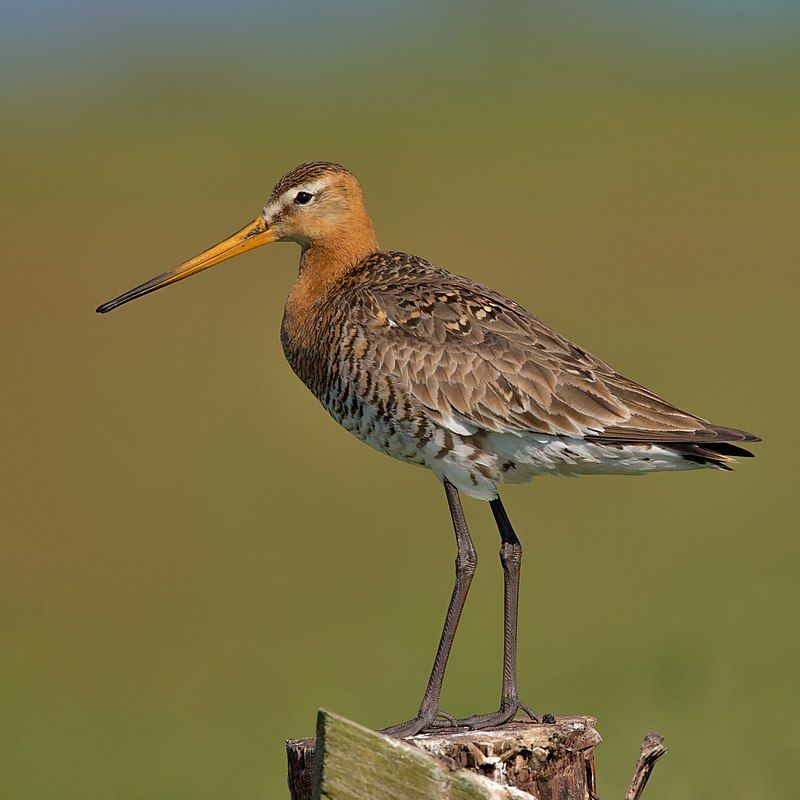
The black-tailed godwit is a species of shorebird belonging to the genus Limosa. First described by Carl Linnaeus in 1758, it is a large and distinctive bird. It has long legs and a long bill, making it easily recognizable.
It is a migratory species, found in Europe, Asia, and parts of Africa. It is usually found in wetlands and grasslands, but it can also be found in coastal habitats.
It feeds mainly on insects, worms, and other small invertebrates, although it may occasionally take small fish or amphibians. Its breeding range is mostly in Europe, but it can also be found in parts of Asia and Africa.
The black-tailed godwit is listed on the IUCN Red List as a species of least concern. Its population is believed to be stable, but it is threatened by habitat destruction and hunting. Conservation efforts are needed to ensure its continued survival.
| Kingdom | Animalia |
| Phylum | Chordata |
| Class | Aves |
| Order | Charadriiformes |
| Family | Scolopacidae |
| Genus | Limosa |
| Species | L. limosa |
15. Caspian Plover
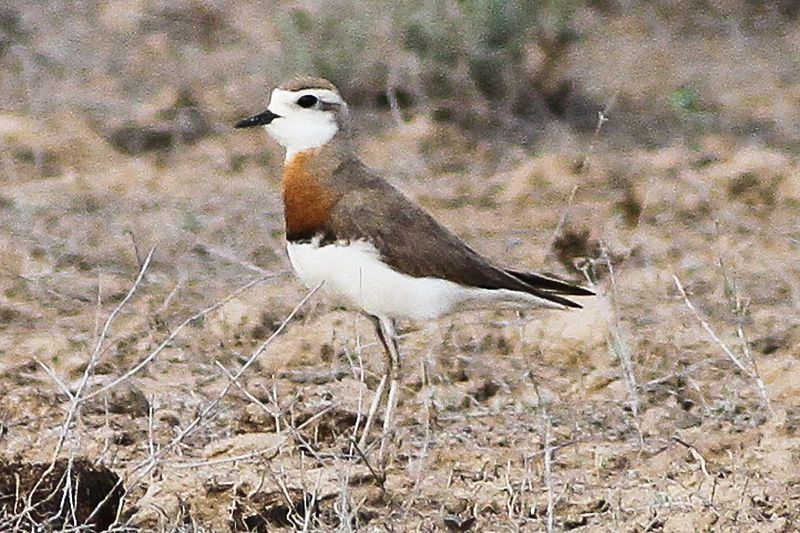
The Caspian plover is a species of wading bird within the plover family. Its genus name Charadrius originates from Late Latin and is derived from the Ancient Greek word kharadrios.
This word was used in the fourth-century Vulgate to describe a yellowish bird commonly found in ravines and river valleys.
The Caspian plover is likely a descendant of this species, given its name and characteristic habitat. The Caspian plover is a fairly small wading bird, with a diet consisting mainly of small insects, larvae, and other invertebrates.
It is found in many parts of the world, including Central Asia, the Middle East, India, and parts of Africa. Its preferred habitat is near bodies of water, such as rivers, streams, lakes, and marshes.
The Caspian plover is typically seen in small flocks, although they can also be seen alone or in pairs. The Caspian plover is a unique species in that it is relatively small, and its feathers are largely a yellowish hue.
It is also known for its distinct call, which is a high-pitched trill often described as “chee-wee-wee”. The Caspian plover is an important species in the global ecosystem, as it helps to control insect populations and can be an important food source for other birds.
As such, it is important to take measures to ensure that the species is protected and its numbers remain stable.
| Kingdom | Animalia |
| Phylum | Chordata |
| Class | Aves |
| Order | Charadriiformes |
| Family | Charadriidae |
| Genus | Charadrius |
| Species | C. asiaticus |
16. Common Ringed Plover
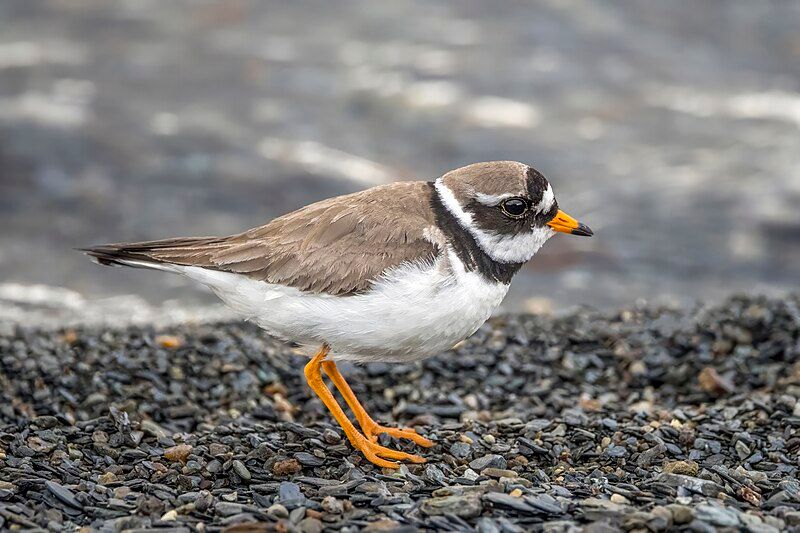
The common ringed plover is a small species of plover that breeds in the Arctic regions of Eurasia. Its genus name, Charadrius, is a Late Latin word that was used to describe a yellowish bird in the fourth-century Vulgate.
This word is derived from the Ancient Greek term kharadrios, which referred to a bird that was found in ravines and river valleys. The ringed plover is a distinctive species due to its small size and yellowish coloring, which enables it to blend in with its environment.
Its breeding grounds in the Arctic region of Eurasia are quite remote, making it a unique bird to observe. The ringed plover is an interesting species to study and observe due to its unique characteristics and its remote breeding grounds.
| Kingdom | Animalia |
| Phylum | Chordata |
| Class | Aves |
| Order | Charadriiformes |
| Family | Charadriidae |
| Genus | Charadrius |
| Species | C. hiaticula |
17. Eurasian Wigeon
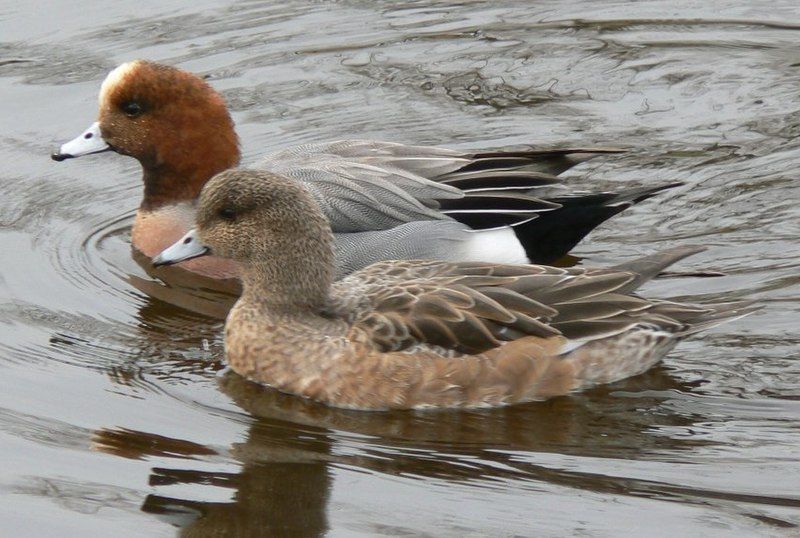
The Eurasian wigeon is a species of dabbling duck, which belongs to the genus Mareca. It is also known as the European wigeon, widgeon, or simply wigeon. It is found in the Palearctic region, which covers much of the Northern Hemisphere, including Europe, North Africa, and Asia.
This species is common and widespread throughout its range, making it one of the more commonly encountered dabbling ducks. The Eurasian wigeon is a medium-sized duck, with a stocky body and short neck.
Its plumage is mainly greyish-brown, with a white patch on the head and a white patch on the flank. The male has a bright chestnut head and a white crescent-shaped patch on its forehead, while the female has a duller grey head and lacks the white crescent.
During the breeding season, the male has some reddish-brown feathers on the back, while the female has some blackish-brown feathers on the back. The Eurasian wigeon feeds mainly on aquatic vegetation and small invertebrates, such as insect larvae.
It prefers shallow marshes and wetlands, where it can forage in the shallow water. This species is a strong flier, and can often be seen in large flocks, moving in synchronized patterns.
The Eurasian wigeon is a gregarious species, and will often form large flocks during the winter months. The Eurasian wigeon is an important species to many cultures and is widely hunted for sport and food.
It is also widely kept in aviculture and is kept by many bird enthusiasts. The Eurasian wigeon is also an important species for conservation and is protected by many countries throughout its range..
| Kingdom | Animalia |
| Phylum | Chordata |
| Class | Aves |
| Order | Anseriformes |
| Family | Anatidae |
| Genus | Mareca |
| Species | M. penelope |
18. Garganey
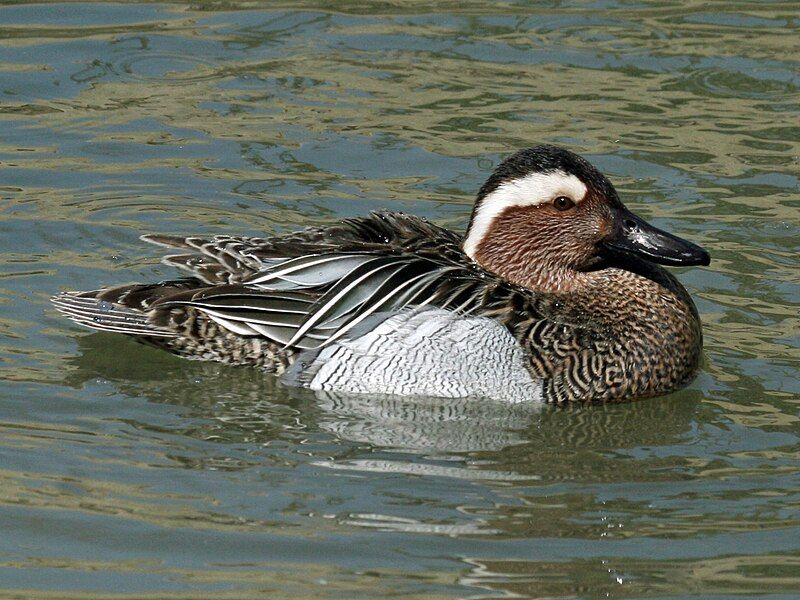
The Garganey is a small species of dabbling duck, meaning it feeds on the surface of the water rather than diving for food. This species is found in many parts of Europe and parts of the Palearctic, the region encompassing the northern parts of Europe, Asia, and Africa.
It is strictly migratory, meaning that the entire population of Garganeys moves to southern Africa, India, Bangladesh, and Australasia during the winter of the Northern Hemisphere.
The migration of the Garganey is typically in large flocks, resulting in a large gathering of this species in these areas. This behavior is beneficial for the species as it allows them to survive the harsher cold temperatures of winter in these areas.
Such migration also allows them to take advantage of the food sources available in these regions, which would not be available in the colder climates of Europe and the Palearctic.
| Kingdom | Animalia |
| Phylum | Chordata |
| Class | Aves |
| Order | Anseriformes |
| Family | Anatidae |
| Genus | Spatula |
| Species | S. querquedula |
19. Kentish Plover
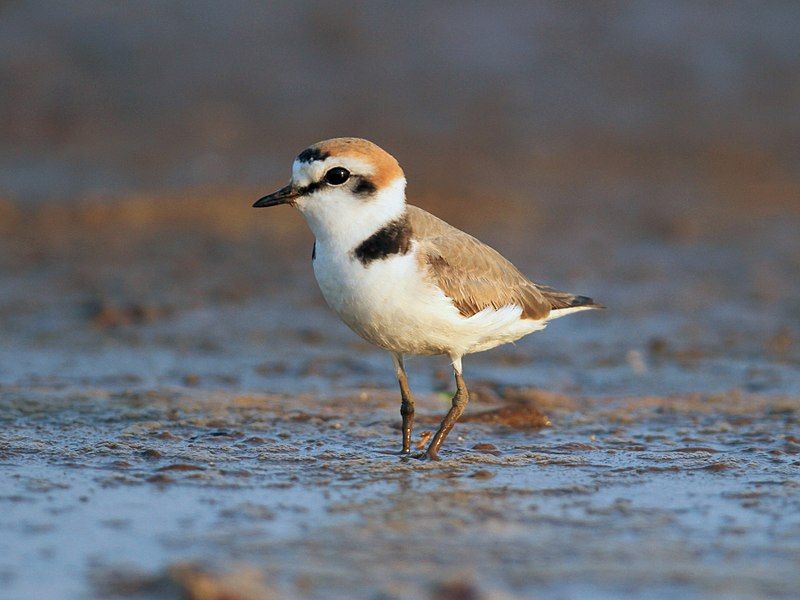
The Kentish plover is a small, widespread species of shorebird belonging to the family Charadriidae. It breeds in a variety of locations, including the shores of saline lakes, lagoons, and coasts.
They can often be found inhabiting sand dunes, marshes, semi-arid deserts, and tundra. This species displays great adaptability, allowing it to thrive in a wide range of habitats. The Kentish plover is a medium-sized shorebird, measuring between 16 and 20 cm in length.
They have short legs and a short, pointed bill. The upperparts are a mottled brown, while the underparts are typically white. The male and female birds have similar plumage, although the female is usually slightly larger than the male.
The Kentish plover feeds mainly on insects and crustaceans which they glean from the ground, as well as aquatic vegetation. They can be seen foraging alone or in small groups. During the breeding season, they form monogamous pairs and build their nests near water sources.
The female will lay up to four eggs, which are then incubated by both parents. The chicks will fledge after about three weeks. The Kentish plover is a widespread species, occurring across much of the Northern Hemisphere.
In Europe, it is found from the British Isles through to the eastern Mediterranean. In Asia, it is found from Siberia to India and Pakistan. In North America, it is found in Alaska and Canada. In the southern hemisphere, it is found in Argentina, Chile, and South Africa.
Overall, the Kentish plover is an adaptable species, capable of thriving in a variety of habitats. It is widely distributed across much of the Northern Hemisphere, making it a common sight in many areas.
| Kingdom | Animalia |
| Phylum | Chordata |
| Class | Aves |
| Order | Charadriiformes |
| Family | Charadriidae |
| Genus | Charadrius |
| Species | C. alexandrinus |
20. Lesser Sand Plover
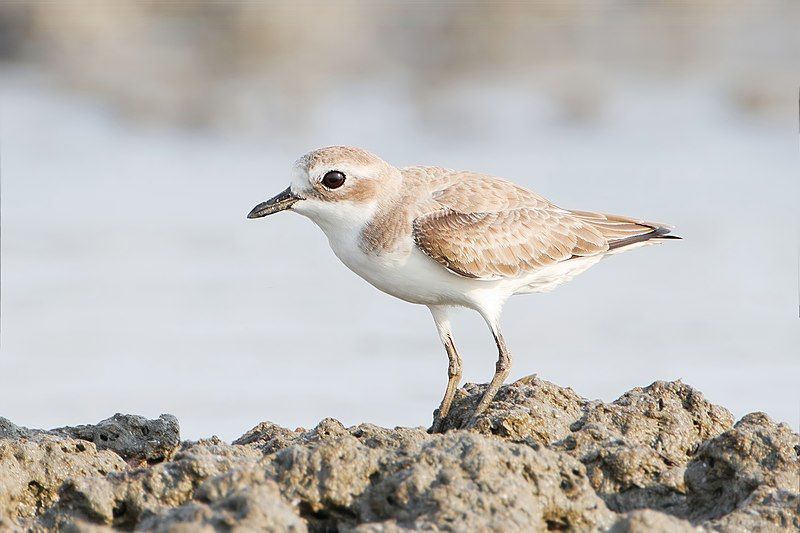
The Siberian sand plover is a small wader belonging to the plover family of birds. It is found in parts of Siberia, Kazakhstan, and Mongolia, among other places.
The International Ornithologists’ Union (IOU) recently split the Tibetan sand plover and the lesser sand plover, which resulted in the change of the vernacular name of the Siberian sand plover from ‘Tibetan sand plover’ to its current name.
This change was made in order to differentiate it from the Tibetan sand plover and the lesser sand plover, as all three species were previously considered to be the same. The Siberian sand plover is a small bird, with a size of about 20 cm and a black or dark brown back.
It has a white underside and a white or pale grey head. It feeds on insects, worms, crustaceans, and mollusks.
Its habitat is mainly on the steppes and in the desert areas. The Siberian sand plover is classified as a species of least concern by the IUCN, due to its wide range and stable population numbers. It is also listed in Appendix I of the Convention on Migratory Species.
This listing signifies the importance of the species in the global ecosystem. The split of the Tibetan and lesser sand plover from the Siberian sand plover is significant as it is now possible to differentiate between the three species.
This split further helps to better understand the ecology of the Siberian sand plover, which is important for its conservation and protection.
| Kingdom | Animalia |
| Phylum | Chordata |
| Class | Aves |
| Order | Charadriiformes |
| Family | Charadriidae |
| Genus | Charadrius |
| Species | C. mongolus |
21. Pacific Golden Plover
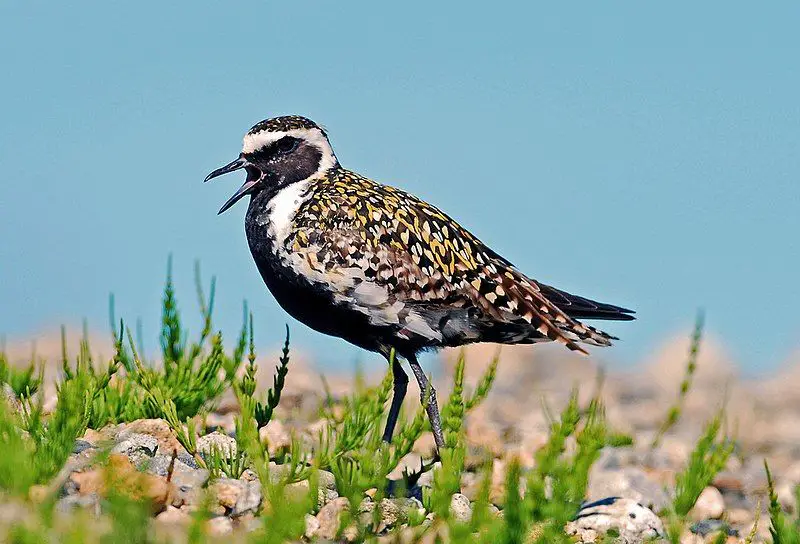
The Pacific golden plover is a migratory shorebird that breeds in the summer months in Alaska and Siberia. This species of bird is medium-sized, and when it is not breeding, it migrates widely throughout the Pacific region.
During its migration, this species of plover can be found in numerous places, including the coasts of Japan, Korea, and the United States. As the bird migrates, it periodically stops in different areas, allowing it to rest and feed.
As it continues its journey, it will make its way back to Alaska and Siberia for the summer breeding season. During this season, it will establish breeding grounds and raise its young before continuing its migratory pattern once again.
| Kingdom | Animalia |
| Phylum | Chordata |
| Class | Aves |
| Order | Charadriiformes |
| Family | Charadriidae |
| Genus | Pluvialis |
| Species | P. fulva |
22. Red-wattled Lapwing
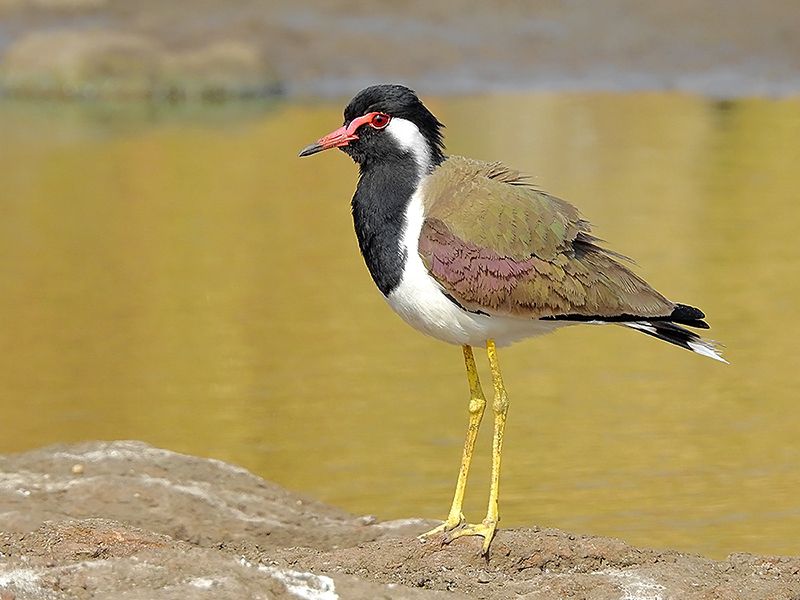
The red-wattled lapwing is a species of wader belonging to the family Charadriidae, which is found in Asia. A wader is a type of bird that spends its time on the ground, as opposed to perching birds which spend their time in trees or on other elevated surfaces.
As such, the red-wattled lapwing is a ground bird and thus is incapable of perching. The red-wattled lapwing is a type of lapwing, which is a group of ground birds belonging to the family Charadriidae.
These birds are typically medium-sized and are characterized by their long, pointed wings, short tail,s and stout bodies. They are typically found in open areas such as grasslands, marshes, and wetlands, and they feed on small animals such as insects, worms, and other invertebrates.
The red-wattled lapwing is a distinctive species with its namesake red wattles found on its face. These wattles are usually bright red, but can also be yellow or orange in color. The back and wings of the bird are generally a grey-brown color, with white and black markings.
The underside of the bird is white, and the legs are black. The red-wattled lapwing also has a distinctive call, which is a loud, piercing “pee-wit” sound. The red-wattled lapwing is an important species in Asia, as it plays an important role in the local ecology.
Its diet of small animals helps to keep insect populations in check, while its loud call helps to warn other birds of potential predators. This species is also a favorite of birdwatchers, as it’s bright colors and distinctive call make it an easy species to spot and identify.
| Kingdom | Animalia |
| Phylum | Chordata |
| Class | Aves |
| Order | Charadriiformes |
| Family | Charadriidae |
| Genus | Vanellus |
| Species | V. indicus |
23. Wood Sandpiper
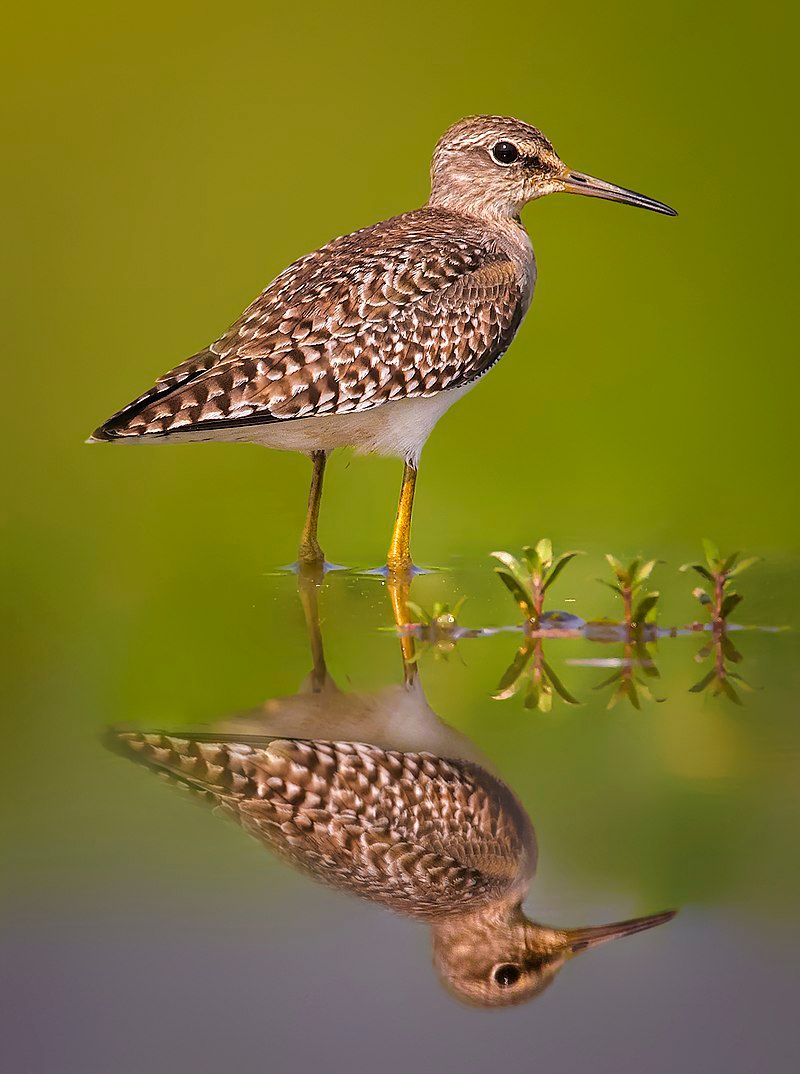
The wood sandpiper is a species of small wader, belonging to the family Scolopacidae. It is native to Eurasia and is the smallest of the shanks. The shanks are a group of mid-sized long-legged waders that inhabit wetlands and other aquatic habitats.
They are found in a wide range of habitats, from shallow marshes to deep lakes and rivers. As a result, they play an important role in maintaining healthy ecosystems.
The wood sandpiper has a slender body and long legs, which allow it to move quickly and efficiently through the water. Its diet consists mostly of small aquatic invertebrates, such as insects, mollusks, and crustaceans.
The wood sandpiper is also known to feed on amphibians, reptiles, and small fish. Its long bill is adapted for probing in mud or silt for food. It is often seen in small flocks and can be identified by its distinctive yellow-green legs and white back.
The wood sandpiper is a species of great conservation importance, and its population is monitored by many conservation organizations.
| Kingdom | Animalia |
| Phylum | Chordata |
| Class | Aves |
| Order | Charadriiformes |
| Family | Scolopacidae |
| Genus | Tringa |
| Species | T. glareola |
24. Yellow-wattled Lapwing
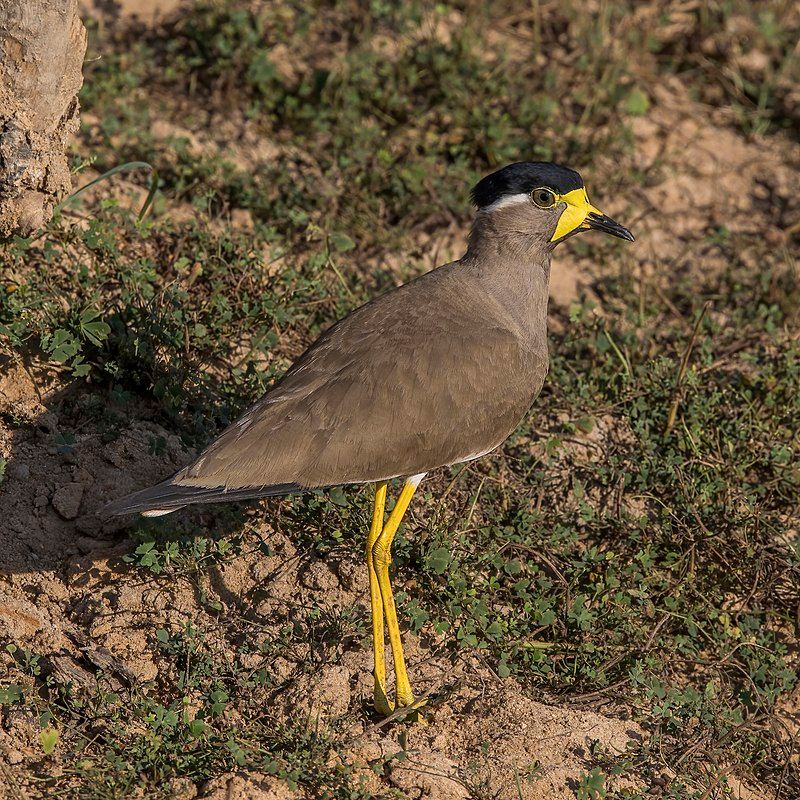
The Yellow-wattled Lapwing is a species of bird found mainly in the dry plains of peninsular India. It is a type of lapwing, which is a group of wading birds that are found in many parts of the world.
This particular species is endemic to the Indian Subcontinent, meaning that it is only found in this region. The Yellow-wattled Lapwing is known for its sharp call and its ability to fly quickly.
Although it does not typically migrate, it has been observed to make seasonal movements in response to rainfall. This behavior helps the species to find suitable habitats with adequate food and water with which to survive.
The Yellow-wattled Lapwing is an important part of the Indian Subcontinent’s ecosystems and is a species that is worth protecting for the future.
| Kingdom | Animalia |
| Phylum | Chordata |
| Class | Aves |
| Order | Charadriiformes |
| Family | Charadriidae |
| Genus | Vanellus |
| Species | V. malabaricus |
Conclusion
Birds play an important role in the Jaffna environment and are a major part of the ecosystem. They provide a variety of important services, such as controlling pests, pollinating plants, and providing food sources for other species.
They also help to maintain biodiversity by providing different habitats for other species to inhabit. Therefore, it is important that we take measures to protect birds in Jaffna and ensure their habitats are maintained.